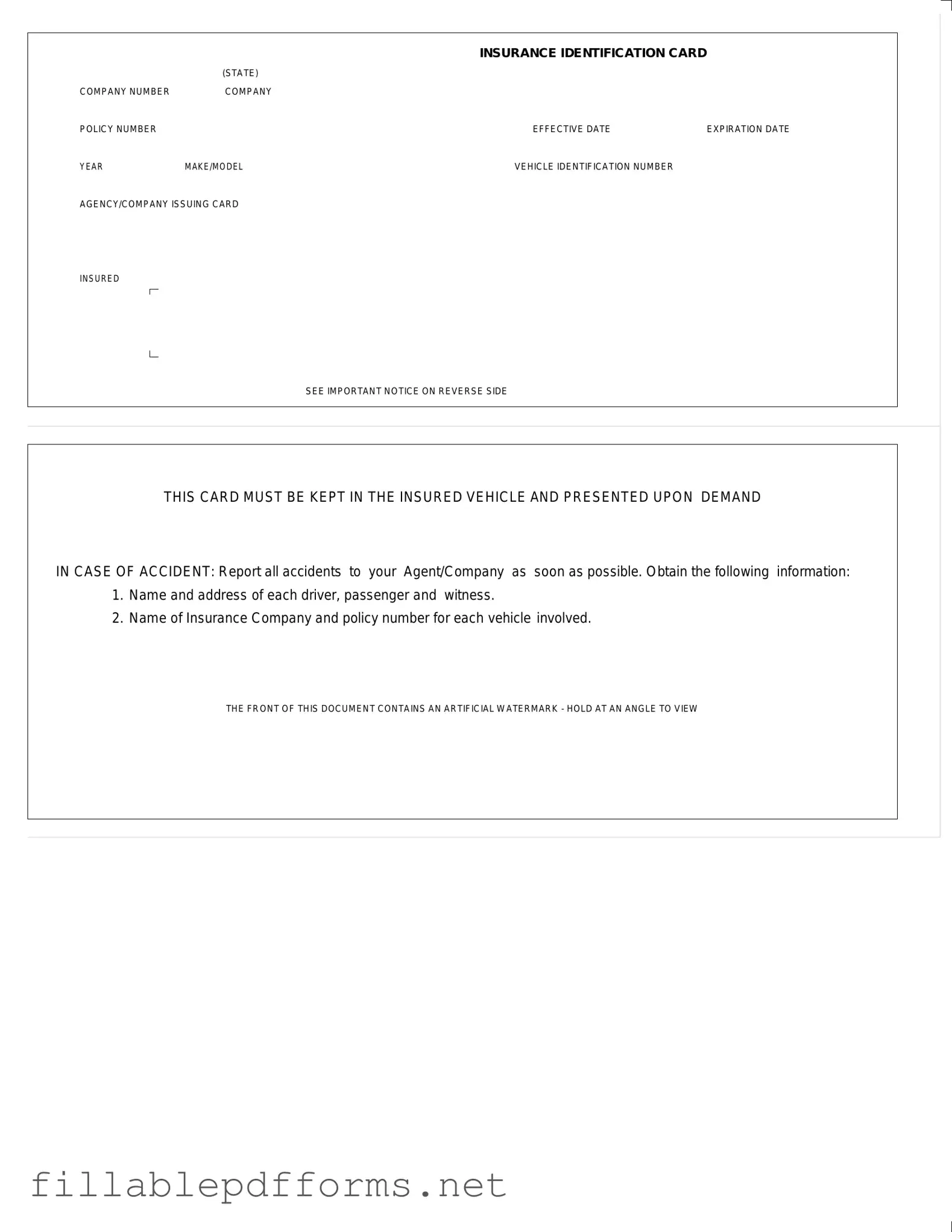The Auto Insurance Card is an essential document for every vehicle owner, providing proof of insurance coverage while on the road. This card includes critical information such as the insurance company name, policy number, and the effective and expiration dates of the coverage. It also details the vehicle’s make and model, along with the Vehicle Identification Number (VIN), ensuring that the card is linked to the correct vehicle. Issued by the insurance agency, this card must be kept in the insured vehicle at all times. In the event of an accident, it is crucial to present this card upon demand and report the incident to the insurance agent or company promptly. Additionally, the card contains important instructions for gathering necessary information from all parties involved in an accident. Notably, the front of the card features an artificial watermark, which can be viewed by holding it at an angle, serving as a security measure to prevent forgery. Always remember to check the back of the card for further important notices and guidelines.
